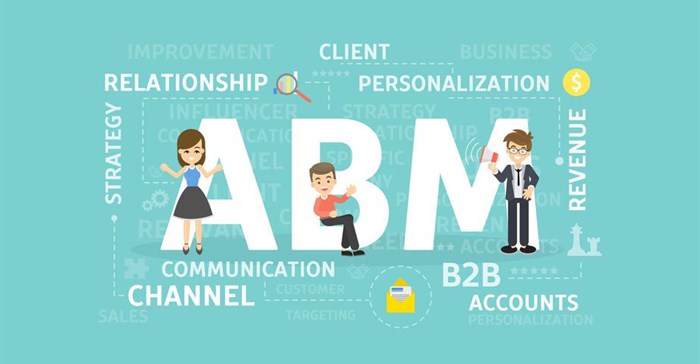Account-based marketing

B2B companies gain real competitive advantage from ABM when it is leveraged as a shared initiative between sales and marketing. In a post-modern world, team structures should be built around ABM capabilities, effectively breaking down siloed ways of working.
More personal engagement
ABM teams begin by identifying their most valuable accounts, gathering insight on them and then developing and implementing highly-customised programmes to accounts, partners, or prospects. This process is done whilst working from the same set of targets and KPIs.
ABM can be applied to both target account acquisition and retention. In acquisition, the approach assists in driving and shaping the buying cycle far earlier – engaging with target accounts pre-RFP stage. By initiating relationships with decision makers and understanding the target audience’s pain points, engagement is far more personal allowing for defence against competitive propositions.
The starting point for ABM is account segmentation – the identification of target accounts. By taking a tiered approach to segmentation, ABM practitioners are able to focus on budget and resources appropriately and ensure that all key accounts are included in their ABM activity. The tiers are divided by the ‘size of the prize’.
The future of ABM
A 1:1 approach is adopted for mission-critical accounts – must wins or must defends. These accounts are typically the company’s top revenue generators. A 1: Few approach is implemented for high-touch accounts, which are accounts within key verticals with significant growth potential. Finally, a 1: Many approach is adopted for programmatic accounts whereby accounts are grouped by commonality – most noticeably within an industry context.
Google searches for the term “account-based marketing” continue to rise steadily and we are seeing a significant shift taking place in marketing in South Africa, however, the future of ABM is technology-driven. Software and systems are ever-evolving and with the right strategy in place, technology can fuel the whole ABM process. Technology is undoubtedly an enabler of ABM yet very few B2B marketers have invested in ABM-specific technology.
As ABM becomes an increasingly important part of B2B marketing, selecting the right ABM tech stack will be one of the greatest challenges faced by marketers. It is important to remember that there is no such thing as the perfect technology stack. The right stack is based around the company’s strategy, talent, audiences and integration - without which the investment is likely to be wasted.
About Maxine Ohayon
- Account-based marketing - 8 Mar 2019
View my profile and articles...